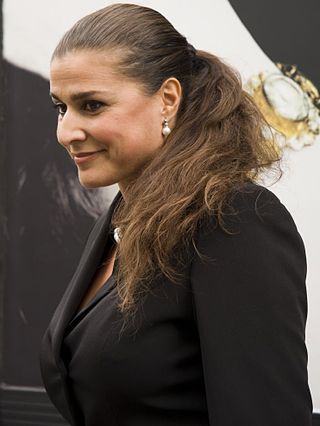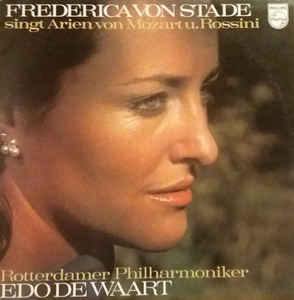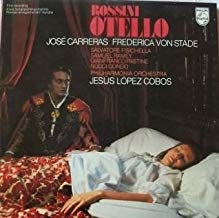Related Research Articles

The Barber of Seville, or The Useless Precaution is an opera buffa in two acts composed by Gioachino Rossini with an Italian libretto by Cesare Sterbini. The libretto was based on Pierre Beaumarchais's French comedy The Barber of Seville (1775). The première of Rossini's opera took place on 20 February 1816 at the Teatro Argentina, Rome, with designs by Angelo Toselli.

Frauen-Liebe und Leben is a cycle of poems by Adelbert von Chamisso, written in 1830. They describe the course of a woman's love for her man, from her point of view, from first meeting through marriage to his death, and after. Selections were set to music as a song-cycle by masters of German Lied, namely Carl Loewe (1836), Franz Lachner (c1839), and Robert Schumann (1840). The setting by Schumann is now the most widely known.

Dietrich Fischer-Dieskau was a German lyric baritone and conductor of classical music. One of the most famous Lieder performers of the post-war period, he is best known as a singer of Franz Schubert's Lieder, particularly "Winterreise" of which his recordings with accompanists Gerald Moore and Jörg Demus are still critically acclaimed half a century after their release.

Cecilia BartoliOMRI is an Italian coloratura mezzo-soprano opera singer and recitalist. She is best known for her interpretations of the music of Bellini, Handel, Mozart, Rossini and Vivaldi, as well as for her performances of lesser-known music from the Baroque and Classical period. She is known for singing both soprano and mezzo roles.

Vesselina Kasarova is a Bulgarian operatic mezzo-soprano.

Marek Kopelent was a Czech composer, music editor and academic teacher, who is considered to have been at the forefront of the "New Music" movement, and was one of the most-published Czech composers of the second half of the 20th century.

Teresa Żylis-Gara was a Polish operatic soprano who enjoyed a major international career from the 1950s through the 1990s.

Ildebrando D'Arcangelo is an Italian opera singer. He has been called a bass-baritone, though he prefers the term basso cantabile.

Joyce DiDonato is an American lyric-coloratura mezzo-soprano. She is notable for her interpretations of operas and concert works in the 19th-century romantic era in addition to works by Handel and Mozart.
Hans Vogt was a German composer and conductor.

Lawrence Brownlee is an American operatic tenor particularly associated with the bel canto repertoire. Describing his voice, Speight Jenkins, general director of the Seattle Opera, said: "There are other singers that sing this repertory very well, but I don't think anyone else has quite as beautiful a sound and as rounded a tone," and praise his "incredible top notes", adding about his high F (F5) in "Credeasi, misera": "With him it's not a scream, it's a beautiful sound." Mezzo-soprano Joyce DiDonato adds: "He is always in service of the music. His natural instrument is just incredibly beautiful. The word 'honey' comes to mind. He also has technical prowess and agility."

Francesco Marconi was an operatic tenor from Rome who enjoyed an important international career. In 1924, a reputable biographical dictionary of musicians called him 'one of the most renowned and esteemed singers of the last 50 years'. Along with his great contemporary Francesco Tamagno (1850–1905), he is the earliest Italian tenor to have left a representative legacy of acoustic recordings.

Stabat Mater is a work by Gioachino Rossini based on the traditional structure of the Stabat Mater sequence for chorus and soloists. It was composed late in his career after retiring from the composition of opera. He began the work in 1831 but did not complete it until 1841.

Julia Mikhaylovna Lezhneva is a Russian soprano opera singer and recitalist, specializing in soprano and coloratura mezzo-soprano material of the 18th and early 19th century. She studied with Tamara Cherkasova, Irina Zhurina, Elena Obraztsova, Dennis O'Neill and Yvonne Kenny.

Luonnotar, Op. 70, is a single-movement tone poem for soprano and orchestra written in 1913 by the Finnish composer Jean Sibelius. The piece is a setting of Runo I of the Kalevala, Finland's national epic, which tells the legend of how the goddess Luonnotar created the Earth. Luonnotar premiered on 10 September 1913 at the Three Choirs Festival in Gloucester, England, with Herbert Brewer conducting the festival orchestra; the soloist was the Finnish operatic diva Aino Ackté, the tone poem's dedicatee. A few months later on 12 January 1914, Ackté gave Luonnotar its Finnish premiere, with Georg Schnéevoigt conducting the Helsinki Philharmonic Orchestra.

The Dryad, Op. 45/1, is a tone poem for orchestra written in 1910 by the Finnish composer Jean Sibelius. He completed it between skiing trips. He conducted the first performance in Kristiania, Norway, on 8 October 1910, together with the premiere of In memoriam. He arranged it for piano in 1910. The piece has been regarded as one of the composer's "shortest and most original orchestral works", as an "impressionist miniature", proceeding from fragments to a "dance-like theme".

Frederica von Stade sings Mozart & Rossini Arias is a 52-minute studio album of operatic arias performed by von Stade and the Rotterdam Philharmonic Orchestra under the direction of Edo de Waart. It was released in 1976. A second, 69-minute version of the album, Frederica von Stade: Haydn, Mozart & Rossini Arias, released by Philips on CD, adds bonus tracks derived from von Stade's contributions to Antal Doráti's recordings of Joseph Haydn's operas La fedeltà premiata and Il mondo della luna. A third, 52-minute version released on SACD by PentaTone in 2005 reverts to the contents of the first version, but presents the music in quadraphonic surround sound.

Otello is a 153-minute studio album of Gioachino Rossini's opera Otello, performed by José Carreras, Nucci Condò, Salvatore Fisichella, Alfonso Leoz, Keith Lewis, Gianfranco Pastine, Samuel Ramey and Frederica von Stade with the Ambrosian Chorus and the Philharmonia Orchestra under the direction of Jesús López Cobos. It was released in 1979.

The Metropolitan Opera Centennial Gala was a televised concert, lasting more than eight hours, that New York City's Metropolitan Opera staged on 22 October 1983 to commemorate the hundredth anniversary of its first performance. A 230-minute selection of excerpts from the concert was first released in 1985 on a pair of Pioneer Artists Laserdiscs, subsequently appearing on a pair of Bel Canto Paramount Home Video VHS videocassettes in 1989 and on a Pioneer Classics DVD in 1998. A remastered double DVD of the film was issued by Deutsche Grammophon in 2009.

"Arioso", Op. 3, is an art song for vocal soloist and accompaniment written in 1911 by the Finnish composer Jean Sibelius, who appears to have worked simultaneously on two versions of the song: one with strings and the other with piano. The piece, which is a setting of the Swedish-language poem Flickans årstider by Johan Ludvig Runeberg, Sibelius's favorite poet, premiered on 18 September 1913 in Helsinki with the Finnish soprano Ida Ekman as soloist, accompanied by her husband, Karl Ekman, on piano. The next year in Turku on 30 March, the version of the piece for string orchestra was first performed, again with Ekman as soloist; her husband this time conducted the Turku Orchestral Society.
References
- ↑ Hubert Hunt, Robert Lucas Pearsall: the Compleat Gentleman and His Music, 1795–1856. Chesham Bois (1977); Chris Woodstra. All Music Guide to Classical Music, 2005, p. 1126.
- ↑ Richard Osborne: Rossini. London: Dent (1986), p. 179.
- ↑ Otello ossia L'Africano in Venezia, tragische Oper in drey Aufzügen von J. Rossini [sic], Klavierauszug (PDF). Leipzig: Breitkopf und Härtel. p. 29.
- ↑ Otello ossia L'Africano in Venezia, tragische Oper in drey Aufzügen von J. Rossini [sic], Klavierauszug (PDF). Leipzig: Breitkopf und Härtel. p. 102.